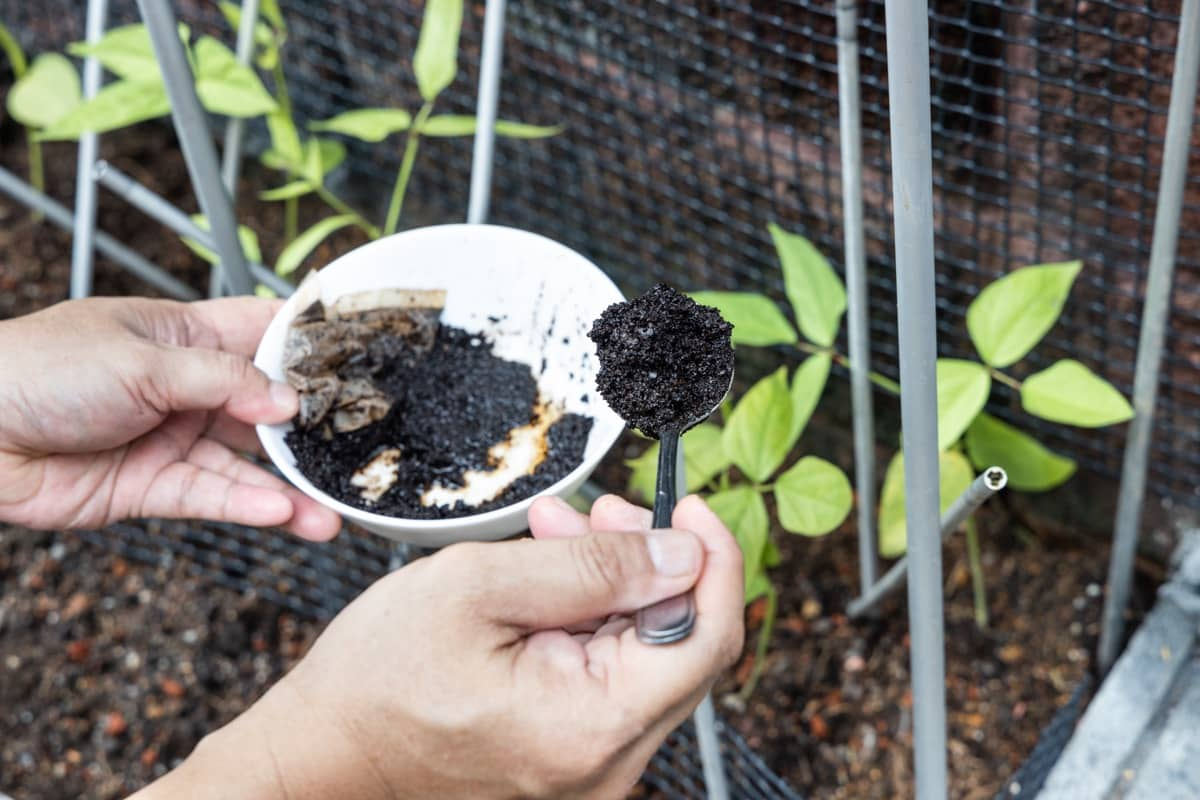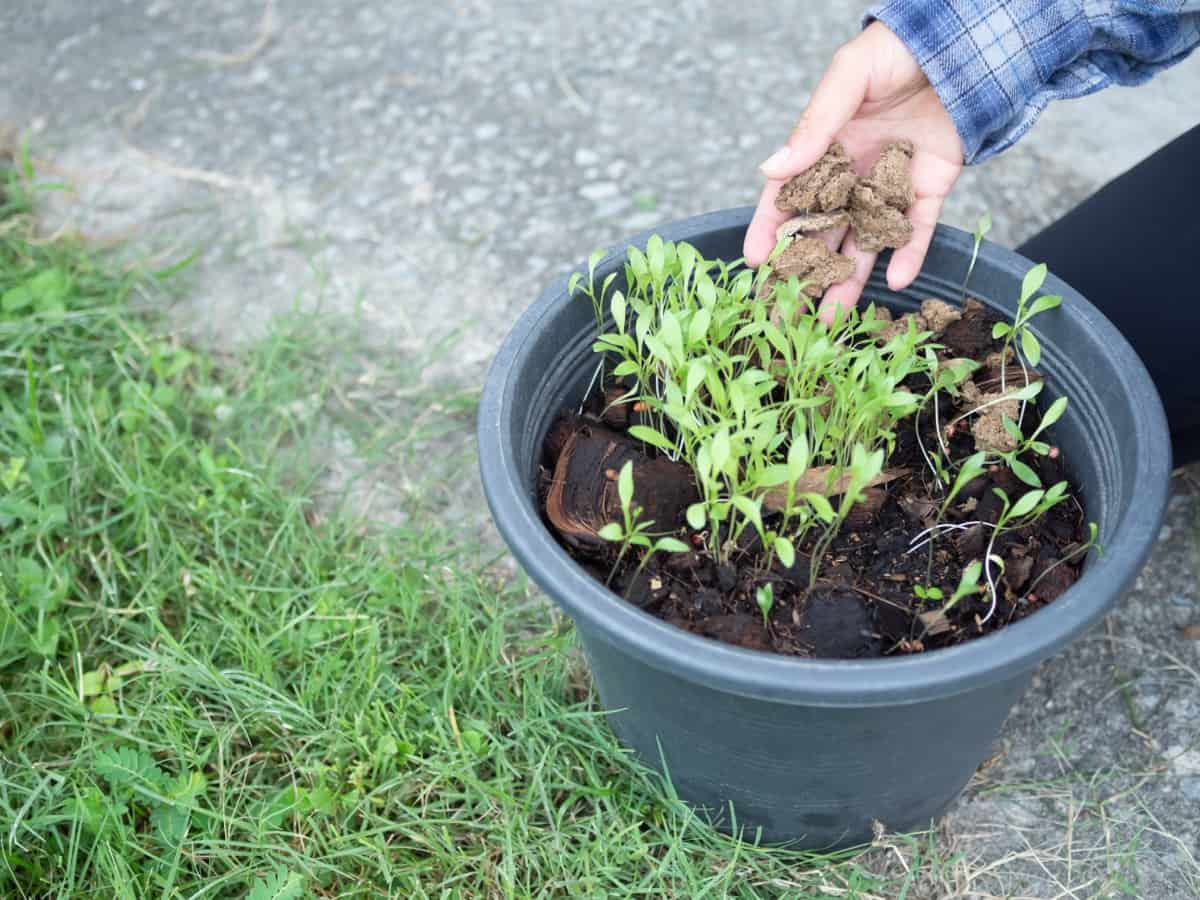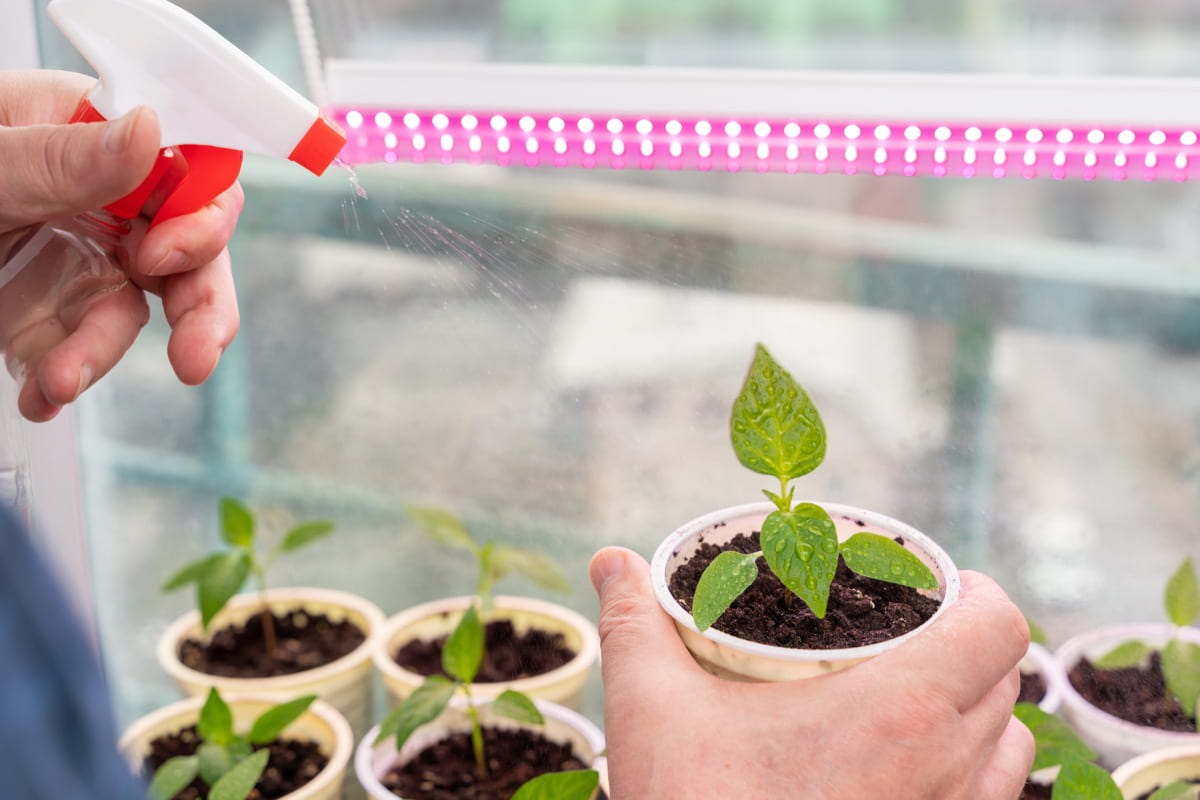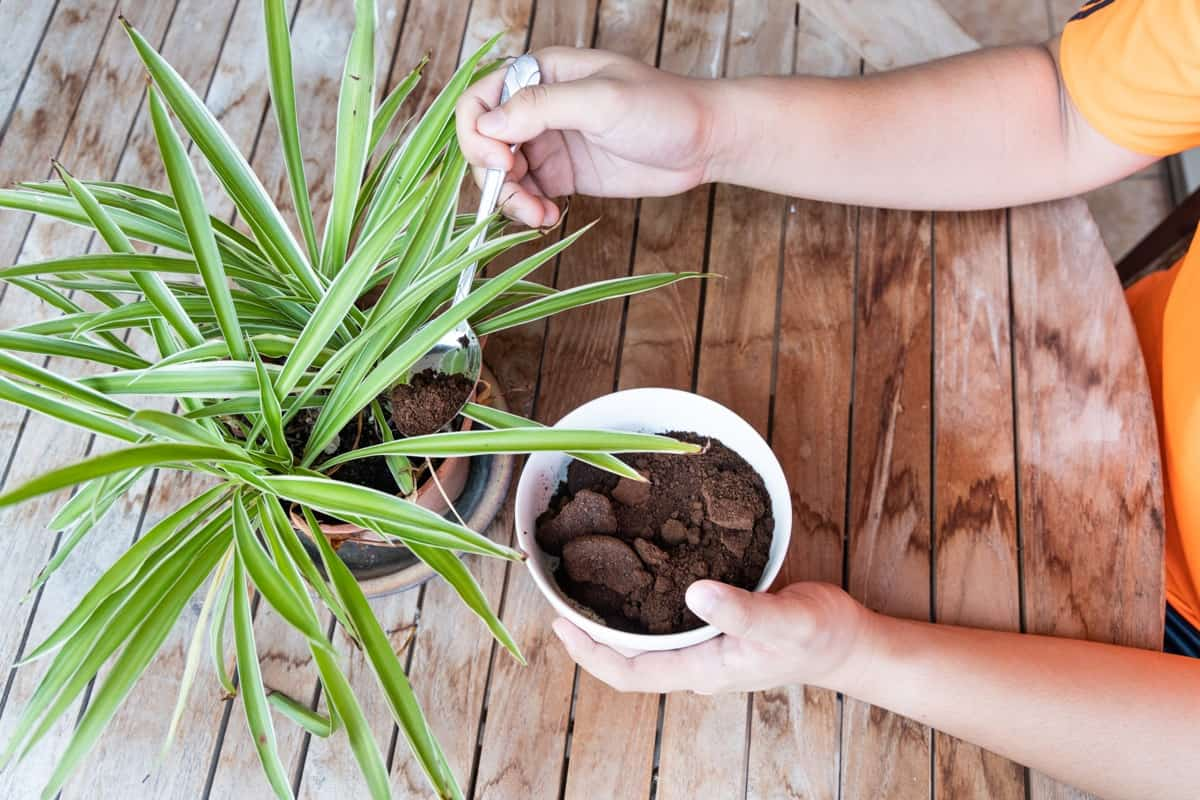Banana peels are an excellent source of many nutrients that plants need, including potassium, calcium, and magnesium. In addition, they have small amounts of nitrogen, phosphorus, and iron. All of these nutrients are essential for plant growth. The benefits of banana peel fertilizer include that it is low in nitrogen, phosphate, and potassium, making it a good choice for vegetative growth and a good source of potassium, magnesium, and vitamin C.

Ways to make and use banana peel fertilizer in garden plants
What is banana peel powder?
Banana peel powder is a type of fertilizer made from banana peels. It is high in potassium and other nutrients that are beneficial for plants. Banana peel powder can be used as a top dressing for plants or mixed into the soil before planting. However, it is important to note that banana peel powder should not be the only source of fertilizer for plants, as it does not contain all the nutrients they need.
Ways to make banana peel fertilizer
- One of the easiest ways to make banana peel fertilizer is to bury the peels in the soil around your plants. The peels will decompose over time and release their nutrients into the soil. This method works best with larger peels cut into smaller pieces.
- You can also dry and powder the peels, then mix them with other dry ingredients like coffee grounds or eggshells to create a balanced fertilizer blend. Add this mixture to your compost pile or sprinkle it around your plants once every few weeks.
- Another popular way is to compost the peels. This can be done by placing the peels in a compost bin or burying them in the soil. The banana peels will then break down over time and release soil nutrients, making them available for plants to uptake.
- You can also make liquid fertilizer from banana peels. To do this, place some chopped banana peels into a water container and allow them to steep for 24 hours. After this time, strain out the solids and apply the resulting liquid directly to the soil around your plants. This method is especially effective if you are growing fruits or vegetables.
- Making banana peel powder is a great way to add organic matter to your garden and help fertilize your plants. Firstly, put a banana into small pieces in a blender or food processor. You can also use a knife to chop up the bananas. Once the bananas are chopped, add 1 cup of warm water and blend until the bananas are smooth. Next, pour the mixture into a jar or container and store it for up to 3 weeks. When it’s time to use the banana peel powder, mix 1 tablespoon of banana peel powder with 1 gallon of water and pour it over your plants.
In case you missed it: Homemade Fertilizers for Root Vegetables: Potatoes, Carrots, Beetroot, Onions, Radishes, Turnip, Ginger, and Garlic

Banana peel fertilizer uses in the garden
Banana peel powder can be used as a fertilizer for indoor and outdoor plants. When used as a fertilizer, banana peel powder can provide your plants with essential nutrients such as potassium, phosphorus, and magnesium. Banana peel powder can also be used to make a natural pesticide. To make a natural pesticide, mix banana peel powder with water and spray it on your plants.
The potassium in the banana peel will kill pests such as aphids, whiteflies, and mites. In addition to being a fertilizer and pesticide, banana peel powder can also be used to make compost. Compost breaks down organic matter, such as leaves, grass, and food scraps. Banana peel powder speeds up the composting process by providing bacteria with the nitrogen they need to break down organic matter.
Methods to use banana peel fertilizer
- As a soil amendment: Add 1/2 cup of banana peel fertilizer per gallon of soil. Mix well and water well after adding. This will help improve your plant’s growth and health.
- Directly onto the plant: Add 1/4 – 1/2 cup of banana peel fertilizer to a watering can or pot and pour water into it. Let the mixture soak into the plant’s roots.
- As a foliar spray: Add two tablespoons of banana peel fertilizer per gallon of water and spray evenly over the leaves of the plants.
In case you missed it: Best Fertilizer for Chayote: Organic, NPK Ratio, Management, and Schedule

How often to use banana peel fertilizer in plants
- To increase the growth of lettuces, herbs, and other leafy vegetables, apply banana peel fertilizer once or twice weekly.
- To help prevent weed growth, apply banana peel fertilizer around the base of plants before planting.
- To increase fruit production on fruit trees, apply banana peel fertilizer every two weeks during the growing season.
- Use Banana Peel Fertilizer according to package instructions to promote flowering and fruiting in tomatoes and other vegetables.
Is banana peel powder good for plants?
It is a great way to add nutrients to plants. It can be used when plants need extra nitrogen, phosphorus, or potassium. There are many ways to use banana peel fertilizer on plants
Effect of banana peel fertilizer on plant growth
Banana peels can be used as organic fertilizer for plant growth. There are many different ways to use banana peel fertilizer depending on the plant it is applied to. Banana peels can boost the growth of plants in several ways. They provide nitrogen, potassium, and other essential nutrients to the plant. They also help increase oxygen production in the plant’s atmosphere, which benefits leaf health and growth.
In case you missed it: Best Fertilizer for Shallots: Organic, Npk Ratio, Schedule, and Management

Which plants like banana peels?
Banana peels can be used as organic fertilizer for vegetables and flowers. They are high in potassium, phosphorus, and nitrogen, all important plant nutrients. Banana peel fertilizer is a good choice for plants that need an extra boost of nutrients, such as Roses, Tomatoes, Staghorn ferns, Banana trees, Air plants, Peppers, and Azaleas. It contains potassium, phosphorus, and nitrogen, which are all essential for plant growth. Tomatoes.
Banana peel fertilizer benefits plant growth
- Banana peel fertilizer is high in potassium and magnesium. These minerals are essential for plant growth and health.
- Banana peel fertilizer is also high in phosphorus. Phosphorus is important for the growth of flowers, fruits, and vegetables.
- Banana peel fertilizer is low in nitrogen. Nitrogen is necessary for the growth of plants, but too much can cause nitrogen to burn on plants.
- Banana peel fertilizer is sodium free, which makes it safe for use on all types of plants.
- Use banana peel fertilizer when you need a quick boost of nitrogen for your plants.
- Add banana peel fertilizer to the soil before planting seedlings or young plants. This will help them get started quickly and grow strong.
- Use banana peel fertilizer as a soil amendment during the growing season. It will help improve plant growth and fertility levels.
- Banana peel fertilizer can also be mixed with water and used as a spray bottle drench for smaller plants or trees.
- You can compost banana peels to create more organic matter in your garden soil.
- It is easy to use. Spread banana peel fertilizer on the ground near the plants, and watch as they grow.
- Bananas are a fruit, which means that they are high in nutrients and antioxidants. This makes banana peel fertilizer an excellent choice for organic gardeners.
- Unlike traditional fertilizers, which can come from factories that produce harmful chemicals, banana peel fertilizer is made from natural ingredients. This means that it is friendly to the environment.
In case you missed it: Best Fertilizer for Indian Hawthorn Plants: Organic, Compost, NPK, How and When to Apply

When to use banana peel powder in plants?
- Before planting: Add 1-2 inches of banana peel compost to the top of the soil before planting. This will help improve the nutrient content of the soil.
- During the growing season: Apply banana peel fertilizer around the base of your plants once a month or when you see yellowing or wilting.
- After harvest: Add banana peels left over from harvesting to your compost pile for added nutrients. Different ways to use banana peel fertilizer:
- Soak in water: Add 1 cup to 1 inch of peeled banana and let soak overnight. Drain off any excess water and apply as directed above.
- Sprinkle on soil: Use as directed above, but sprinkle on top of the soil instead of soaking in water first.
- Make a mulch: Spread peeled banana leaves on top of the soil before planting or during dormancy, then cover them with straw, hay, or other mulch for extra warmth and protection against weeds.
Ways to use banana peel fertilizer in your garden plants
- To use banana peel powder as a fertilizer, add it to the soil around your plants. To fertilize your plants, you can add it to compost or make tea from the powder and water. Start with a small powder and increase it gradually as needed.
- Banana peel powder can be used as a fertilizer or mixed with other organic materials such as compost.
- Sprinkle it around the base of your plants or mix it into the soil. Next, you can add banana peel powder to your compost pile or worm bin. As the banana peel decomposes, it will release potassium into the compost, which will then be available for your plants to uptake when you use the compost as fertilizer.
- Make worm castings with banana peels. Worm castings are a great method to add nutrients and minerals to the soil. To make worm castings, place chopped banana peels into a bucket or container of water and let them rot. The rotting process will release valuable nutrients into the water, which plants can absorb. You can then use the worm castings to fertilize your plants or spread them around your garden as a mulch layer.
- Repel pests with banana peels. Bananas are known for being effective repellents against pests such as mosquitoes and wasps. Add chopped banana peels to prevent pests from landing near vegetable gardens or flower beds.
- Add a layer of fresh banana peels to your compost pile or garbage can. This will help feed other organisms in the compost and give them food for growth.
- Pulverize dried banana peels and spread them on the ground near your plants as mulch. This will help keep weeds down and prevent moisture loss from your plants.
- It is a good source of potassium, which is necessary for plants to grow healthy leaves and flowers. Adding it to potting soil will help your plants get the nutrients they need early in their development.
- Add 1/2 cup of banana peel fertilizer to water your plants. Sprinkle a few tablespoons of banana peel fertilizer on your plants once a week in the Spring and Fall for best results. Spraying banana peel fertilizer onto plants as a foliar spray will help them get the most out of their nutrients. This method is especially useful if you have difficulty getting your plants to take in other forms of fertilization.
- Adding decomposing leaves and fruit from plants into your compost pile helps improve the quality of the soil and provides beneficial microorganisms that can help fertilize your garden plants.
- Like Foliar spraying, topping plants with banana peel will help them absorb the nutrients they need better. This can be helpful if you don’t have much time or want to ensure that all fertilizer reaches the plant’s roots.
In case you missed it: Best Fertilizer for Mangosteen Tree: Organic, Compost, NPK, How and When to Apply

Conclusion
Banana peels come with all essential nutrients for healthy plant growth. Additionally, banana peels are an excellent source of biodegradable waste that can be used as fertilizer for your garden. Banana peel powder is a great and natural way to give your garden plants the necessary nutrients. Banana peel fertilizer can be used any time during the growing season; however, it is most beneficial in early spring and late fall.
- Broccoli Seed Germination and Selection
- Asparagus Seed Germination and Variety Selection
- Seasonal Flower Gardening: Best Practices for Spring, Summer, Fall, and Winter
- How to Grow Hibiscus from Flower
- Plantation Ideas for Home Decoration: A Beginners Guide
- Flower Garden Designs and Layouts for Beginners
- Planting and Spacing Techniques in Papaya: A Beginner’s Guide
- Growing Gold: Essential Techniques for Planting Pineapples
- How to Make Kalanchoe Plant Bushy: Home Remedies and Solutions
- 11 Reasons Why Your Gardenia is Not Blooming: Home Remedies and Solutions
- Eco Elegance: The Guide to Designing a Drought-Tolerant Landscape
- Gardening on a Slope: Strategies for Hillside Landscaping
- Nourish and Flourish: Top Organic Mulches for Thriving House Plants
- Everything You Want to Know about Indian Mogra Flower: Discover Uses and Growing
- Green Thumb Success: Expert Tips for Cultivating Greenhouse Pumpkins All Year Round
- Maximize Growth & Flavor: The Ultimate Guide to Companion Planting in Herb Gardens
- How to Control Rhododendron Problems Naturally: Home Remedies and Organic Ways to Fix Them
- Natural Magic: The Remarkable Benefits of Cinnamon for Plants
- Best Steps to Revive Dying Tulip with Natural and Organic Treatment
- 10 Reasons Why Your Angel Trumpet is Not Blooming: Remedies and Treatment
- How to Fix Periwinkle Leaf and Flower-Related Problems: Natural Remedies and Solutions
- How to Fix Zinnias Leaf and Flower Problems: Discover Natural and Home Remedies
- Organic Steps to Induce Lemon Tree Flowers: A Comprehensive Guide
- Bloom Booster: Crafting the Perfect Homemade Bougainvillea Fertilizer
- Optimizing Growth: A Guide to Applying NPK Fertilizer for Potted Plants
- 10 Best Homemade Fertilizers for Rubber Plant: DIY Recipes and Application Method
- How to Boost Female Pumpkin Flowers: Effective Steps for More Flowers and High Yields
- Transform Your Indoor Garden: Top Benefits of Pink Salt for Houseplants
- 10 Best Homemade Fertilizers for Peacock Plants (Calathea): Easy DIY Guide
- Unlock Blooms: 9 Reasons Why Your Potted Chrysanthemum is Not Blooming
- 8 Reasons Why Your Potted Hibiscus is Not Blooming: Fix it with Simple Solutions
- Unlock Blooms: 9 Key Reasons Your Potted Frangipani Won’t Flower
- 10 Reasons Why Is My Ice Plant Not Blooming: Remedies and Treatment
- 10 Reasons Why My Potted Hydrangea Not Blooming: Treatment and Remedies
- 10 Reasons Why is My Wisteria Not Blooming: Remedies and Treatment
- 10 Reasons Why is My Goldfish Plant Not Blooming: Remedies and Treatment